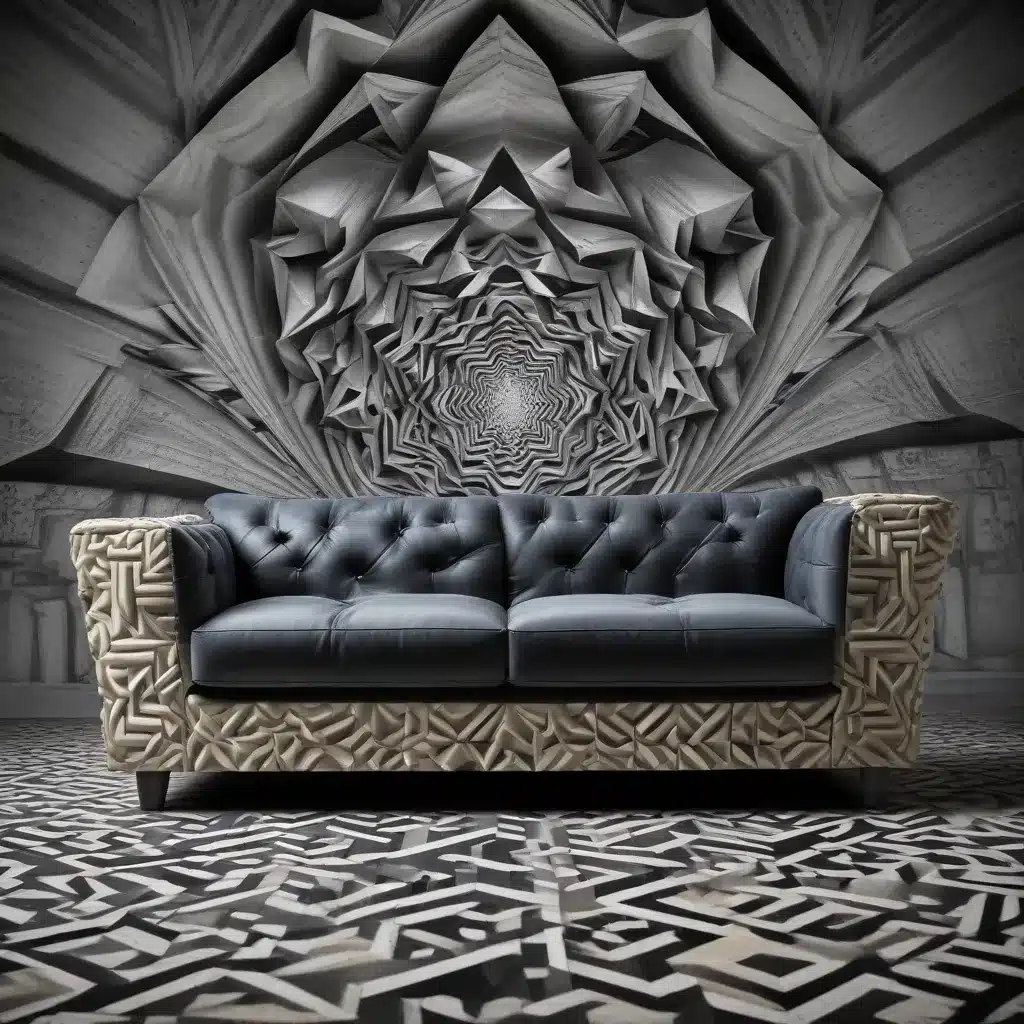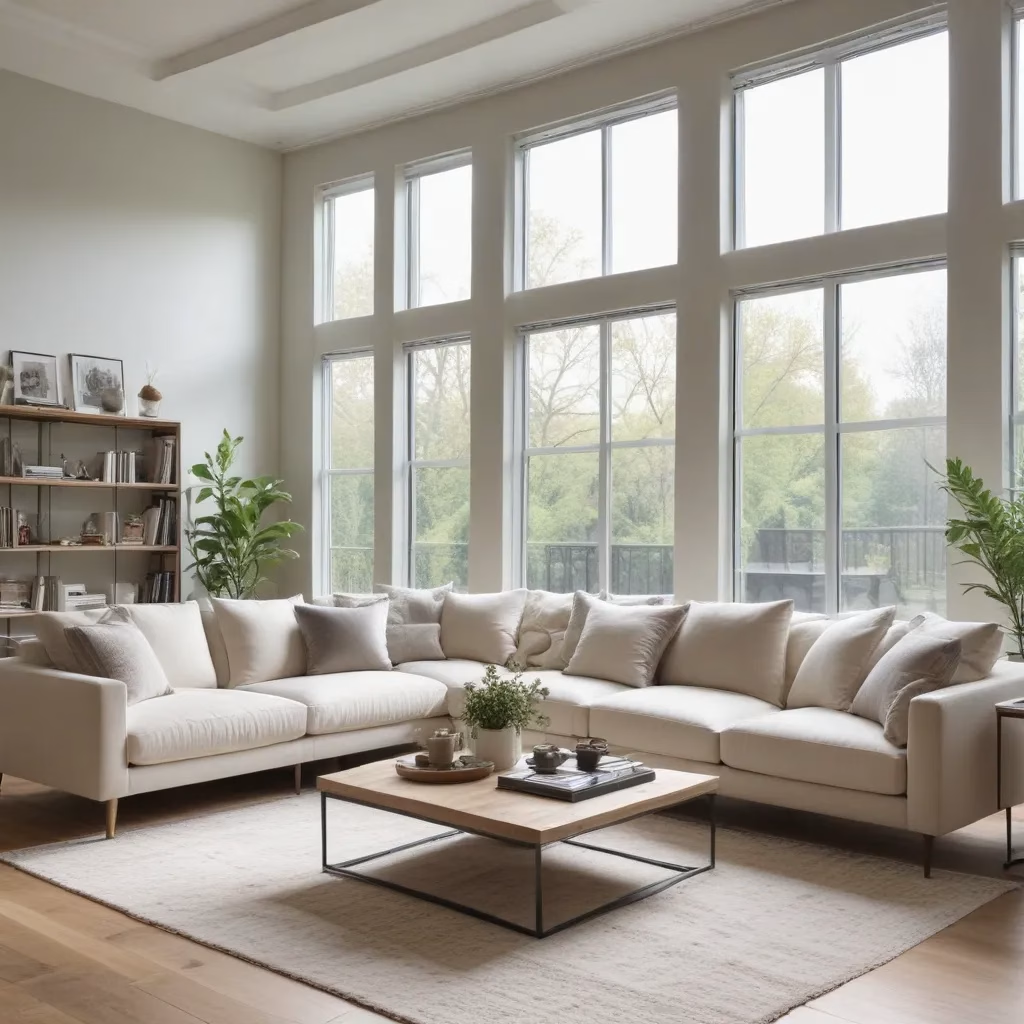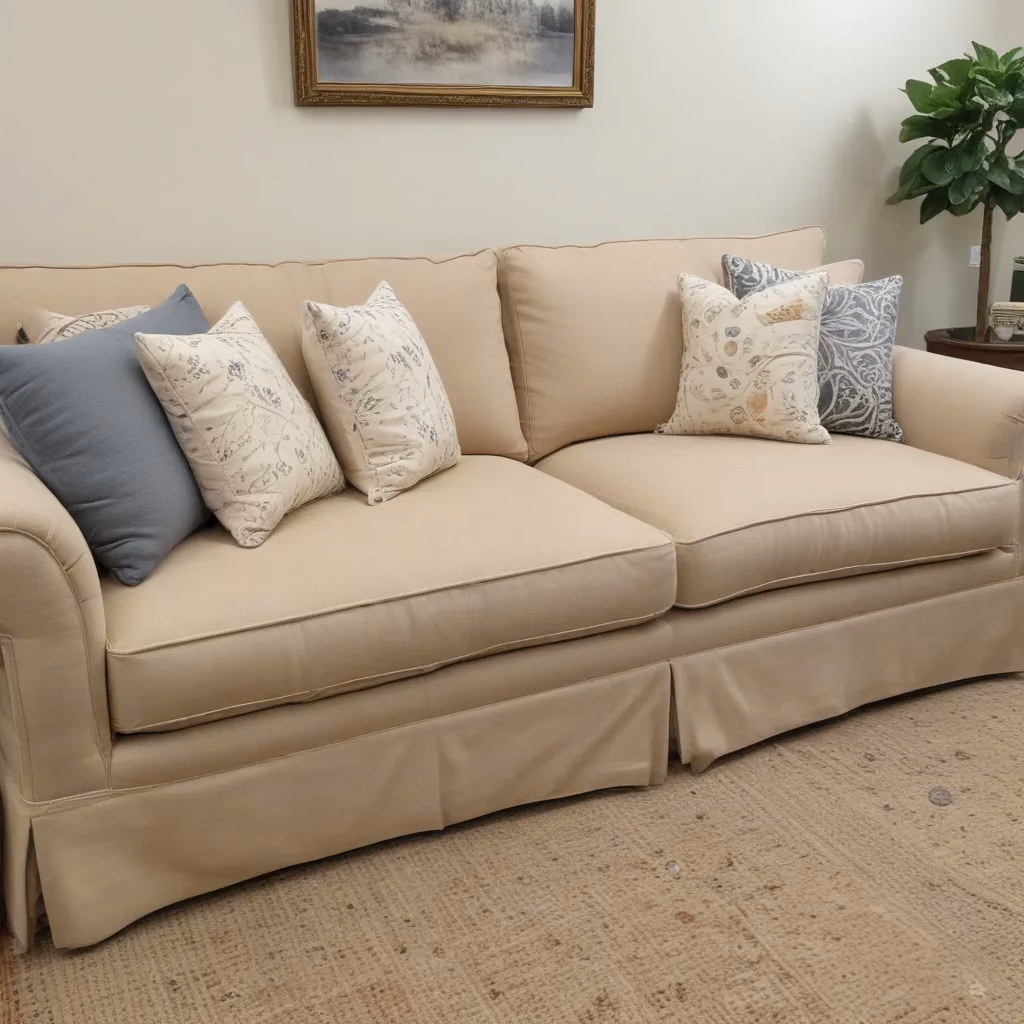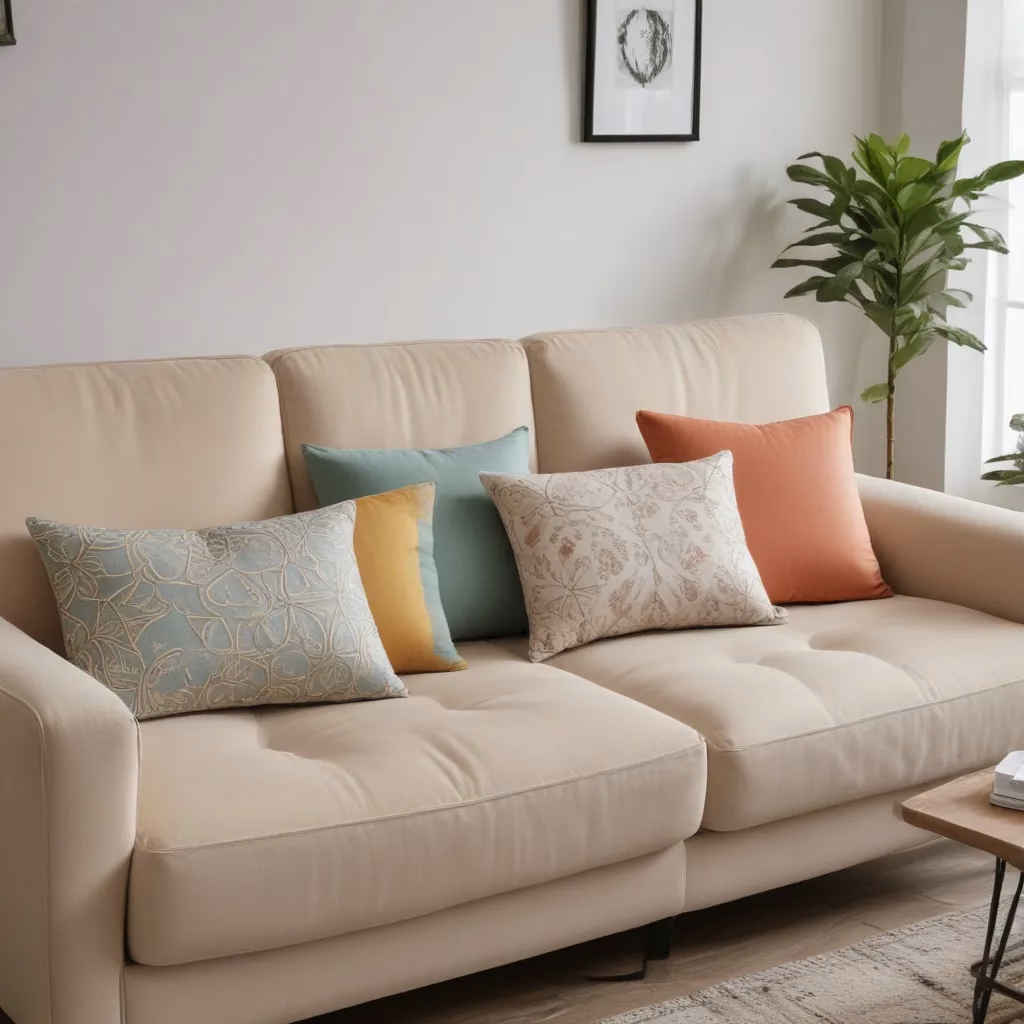
The Evolution of Geometric Patterns in Sofa Design
As a furniture specialist with years of experience, I’ve witnessed firsthand the fascinating evolution of geometric patterns in sofa design. The interplay between form and function has always been at the heart of furniture creation, but recent trends have taken this concept to new heights. Geometric patterns, once confined to subtle accents, have now become bold statements in their own right.
The resurgence of geometric designs in sofas isn’t just about aesthetics; it’s a reflection of our changing relationship with space and perception. Homeowners and designers alike are embracing patterns that challenge the eye and create visual interest. This shift has led to sofas that aren’t just comfortable seating options but also serve as artistic focal points in a room.
One of the most intriguing aspects of this trend is how it draws inspiration from various art movements. The influence of Op Art, with its mind-bending optical illusions, is particularly evident. Sofas now feature patterns that seem to shift and move as you look at them, creating a dynamic presence in any living space. This fusion of art and furniture design has opened up new possibilities for creative expression in home decor.
The Science Behind Optical Illusions in Furniture
The incorporation of optical illusions in sofa design is more than just a visual trick; it’s rooted in the science of perception. Our brains are wired to make sense of what we see, often filling in gaps or creating patterns where none exist. Clever furniture designers are now exploiting this tendency to create sofas that appear to defy logic.
One popular technique involves using contrasting colors and shapes to create the illusion of depth or movement. For example, a sofa might feature a pattern of interlocking squares that seem to recede into the fabric, giving the impression of a three-dimensional surface on a flat plane. This effect can make a sofa appear larger or smaller than it actually is, depending on the design.
Another approach leverages the principle of figure-ground perception. By carefully balancing positive and negative space in a pattern, designers can create sofas where the background seems to come forward, or the foreground appears to recede. This play with perception can dramatically alter how a sofa fits into a room’s overall design scheme.
Practical Considerations for Geometric Patterned Sofas
While the visual impact of geometric patterns is undeniable, it’s essential to consider practical aspects when choosing such a bold piece of furniture. Durability is a key factor. Highly patterned fabrics can sometimes show wear more quickly than solid colors, so it’s crucial to select high-quality materials that can withstand regular use.
Cleaning and maintenance are also important considerations. Complex patterns can sometimes hide small stains or spills, which can be both a blessing and a curse. On one hand, it makes the sofa more forgiving of minor accidents. On the other, it can make thorough cleaning more challenging. I always recommend discussing cleaning requirements with the manufacturer or a professional upholstery cleaner before making a purchase.
Lastly, it’s worth thinking about the long-term impact of a strongly patterned sofa on your room’s design. While it can be a striking centerpiece, it may also limit your ability to change other elements of your decor without creating visual clashes. Consider whether you’re prepared to commit to a particular aesthetic for the long haul before investing in a geometric patterned sofa.
Integrating Geometric Sofas into Different Design Styles
One of the most exciting aspects of the geometric sofa trend is its versatility. These bold pieces can be integrated into a wide range of design styles, from minimalist modern to eclectic bohemian. The key lies in understanding how to balance the sofa’s strong visual presence with the rest of the room’s elements.
In a minimalist setting, a geometric sofa can serve as a striking focal point. The clean lines and simple color palettes often associated with minimalism provide the perfect backdrop for a bold, patterned piece. To maintain balance, I often advise clients to keep other furnishings and decor items simple and understated, allowing the sofa to take center stage.
For those with a more eclectic taste, a geometric sofa can be an excellent addition to a mix of styles and eras. The key here is to find common elements – colors, shapes, or materials – that tie the various pieces together. A geometric sofa might echo patterns found in a vintage rug or complement the lines of a mid-century modern coffee table.
In traditional interiors, geometric sofas can add a contemporary twist without overwhelming the classic elements. I’ve found that sofas with subtler patterns or those that incorporate traditional motifs in a geometric style work particularly well in these settings. They provide a bridge between the old and the new, creating a harmonious blend of styles.
The Role of Color in Geometric Sofa Design
Color plays a crucial role in the impact of geometric patterns on sofas. The choice of color can dramatically alter the perception of the pattern, affecting both its visual prominence and its ability to integrate with the surrounding decor. In my experience, there are several approaches to color that can yield striking results.
Monochromatic schemes, where the pattern is created using different shades of the same color, can be particularly effective. This approach allows for a bold pattern that doesn’t overwhelm the space. It’s an excellent choice for those who want to experiment with geometric designs without committing to a multi-color palette.
Contrasting color combinations, on the other hand, can create powerful visual effects. Black and white is a classic choice that never goes out of style. It can create a sense of drama and sophistication in a room. For a more playful look, complementary colors like blue and orange or purple and yellow can create vibrant, eye-catching designs.
Neutral colors with metallic accents are another popular option. This combination can add a touch of glamour to a room without being overpowering. The subtle shimmer of metallic threads or prints can catch the light in interesting ways, adding depth and dimension to the pattern.
Custom Geometric Designs: A New Frontier in Sofa Personalization
The rise of digital design and manufacturing technologies has opened up new possibilities for custom geometric patterns in sofa design. This trend towards personalization allows homeowners to create truly unique pieces that reflect their individual style and complement their specific living spaces.
Custom geometric designs can range from simple repeating patterns to complex, one-of-a-kind artworks. The process typically involves working with a designer or using specialized software to create a pattern that can be printed or woven into the fabric. This level of customization was once reserved for high-end, bespoke furniture, but it’s becoming increasingly accessible to a wider range of consumers.
One of the advantages of custom designs is the ability to perfectly match or complement other elements in a room. A geometric pattern could be created to echo the lines of architectural features, or to incorporate colors from existing artworks or decor items. This level of coordination can create a cohesive, harmonious look that’s difficult to achieve with off-the-shelf furniture.
However, it’s important to approach custom designs with careful consideration. A pattern that looks great on a small scale might be overwhelming when applied to an entire sofa. I always advise clients to mock up their designs at full scale before committing to a custom piece. This can help avoid costly mistakes and ensure that the final product meets their expectations.
The Future of Geometric Patterns in Sofa Design
As we look to the future, it’s clear that geometric patterns will continue to play a significant role in sofa design. However, I believe we’ll see some exciting developments in how these patterns are conceived and executed. One trend I’m particularly excited about is the integration of smart technologies into patterned fabrics.
Imagine a sofa whose geometric pattern could change color or intensity based on the time of day or the mood of the room’s occupants. While this might sound like science fiction, advances in e-textiles and color-changing materials are bringing this possibility closer to reality. Such innovations could revolutionize how we think about furniture design, allowing for dynamic, adaptive living spaces.
Another area of potential growth is the use of sustainable materials in creating geometric patterns. As environmental concerns become increasingly important to consumers, furniture designers are exploring ways to create visually striking patterns using eco-friendly fabrics and dyes. This could lead to a new wave of geometric designs that are as kind to the planet as they are pleasing to the eye.
Lastly, I anticipate a trend towards more subtle, sophisticated geometric patterns. While bold, high-contrast designs will always have their place, I expect to see an increase in patterns that reveal their complexity gradually. These might include tone-on-tone designs or patterns that incorporate texture as well as color to create their visual effect.
Caring for Your Geometric Patterned Sofa
Proper care and maintenance are essential for preserving the beauty and longevity of a geometric patterned sofa. The specific care requirements will depend on the materials used, but there are some general guidelines that can help keep your sofa looking its best.
Regular vacuuming is crucial for removing dust and debris that can become embedded in the fabric. Use a soft brush attachment to avoid damaging the pattern or texture of the fabric. For more delicate fabrics, a lint roller can be an effective alternative.
Spills should be addressed immediately to prevent staining. Blot the spill with a clean, white cloth, working from the outside of the stain towards the center to avoid spreading it. Avoid rubbing, as this can damage the fabric and distort the pattern.
For deeper cleaning, it’s best to consult a professional upholstery cleaner who has experience with patterned fabrics. They’ll have the knowledge and tools to clean your sofa thoroughly without damaging the pattern or compromising the fabric’s integrity.
Sunlight can fade fabric over time, potentially altering the appearance of your geometric pattern. If your sofa is placed in a sunny spot, consider using window treatments to filter the light or rotating the cushions regularly to ensure even wear.
Lastly, be mindful of how you use your sofa. Avoid sitting on the arms or back of the sofa, as this can distort the shape and pattern over time. Use throws or arm covers in high-use areas to protect the fabric and extend the life of your sofa.
Conclusion
The world of geometric patterns in sofa design is rich with possibilities. From bold optical illusions to subtle, sophisticated designs, these patterns offer a unique way to express personal style and add visual interest to any living space. As technology and design techniques continue to evolve, we can look forward to even more innovative and exciting developments in this field.
Whether you’re considering a geometric patterned sofa for your home or simply appreciate the artistry behind these designs, I hope this exploration has given you a deeper understanding of this fascinating trend. Remember, the perfect sofa is one that not only looks great but also meets your practical needs and makes you feel comfortable in your space.
For more inspiration and expert advice on choosing the perfect sofa for your home, visit Sofa Spectacular. Our team is always ready to help you find the ideal piece to complement your unique style and living space.



